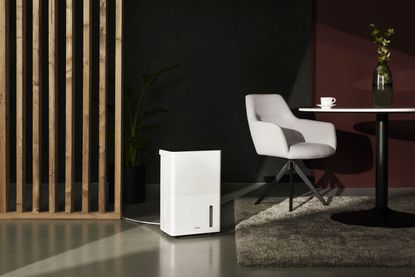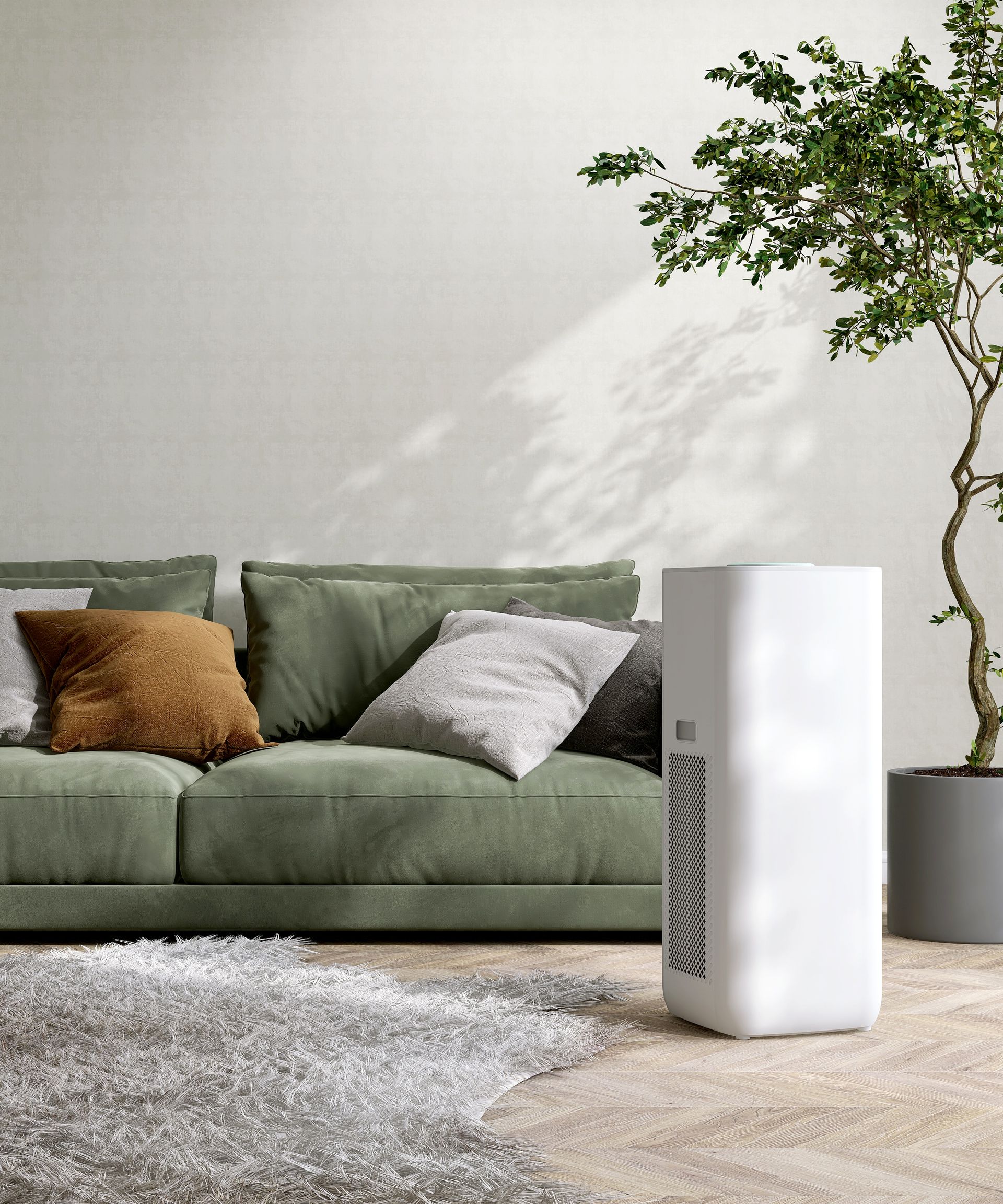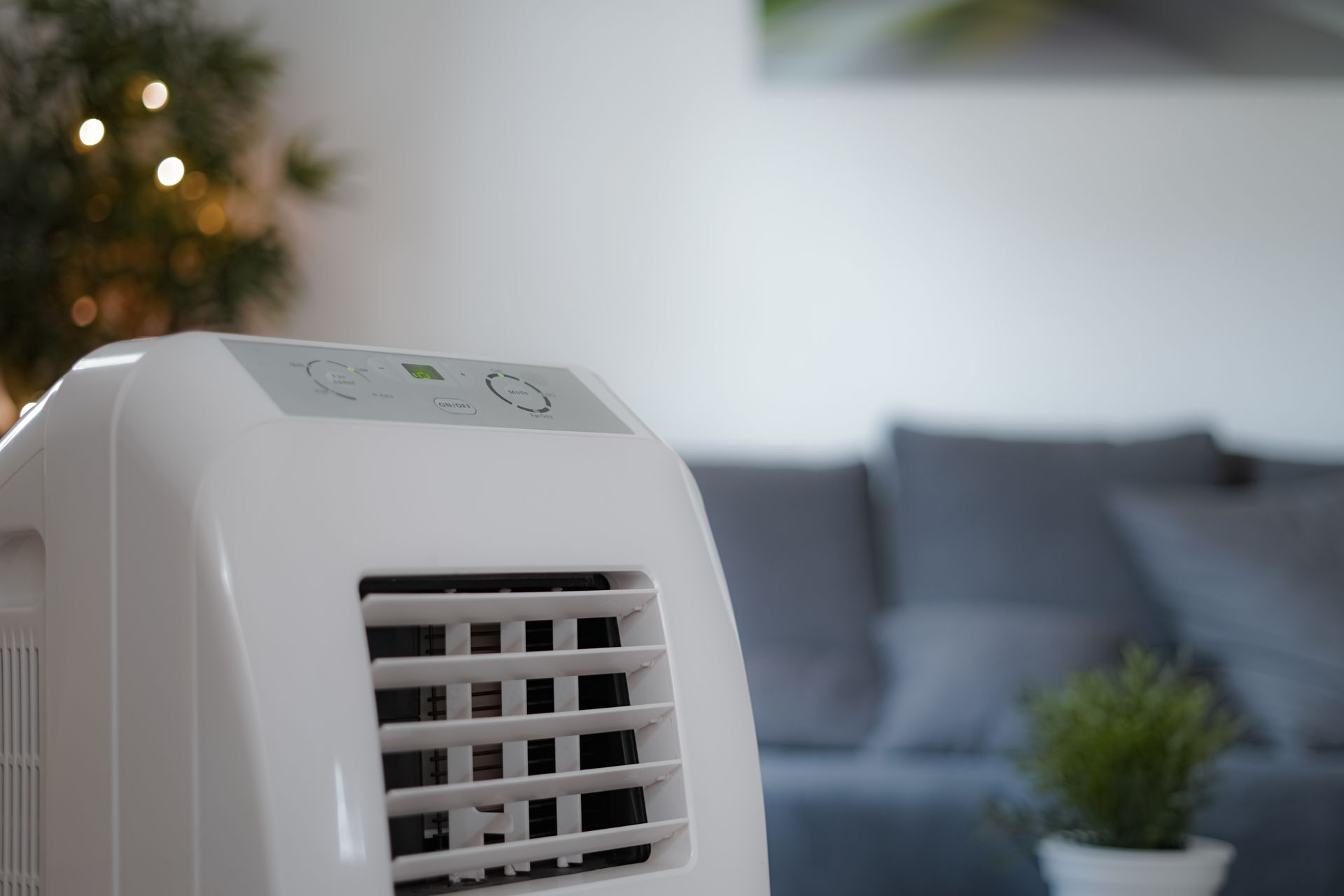What should the humidity of my home be in winter? Experts reveal ballpark figures for the best air quality
Humidity levels are a common cause for concern during winter, but here's what to aim for (and how to fix it)


Cooler temperatures and longer nights are upon us, and that also means one dreaded change in the air (quite literally): the humidity level. Winter humidity doesn't only wreak havoc on our lips, skin, and hair, but the inside of our homes, too. From condensation and peeling paint to dust mites and even damaging health risks, the wrong humidity level can cause some serious problems.
Dehumidifiers (or humidifiers) are excellent appliances for helping you monitor the moisture levels in your home and gain control over your air quality. As we look to spend more time indoors creating a comfortable environment inside your home is essential, and the secret to doing so is finding the ideal humidity range for your home.
The question is, what exactly should that figure be in winter, and how can you find out the exact humidity level in your space? To help you achieve the best indoor air quality possible, we spoke with some HVAC experts to find out the ballpark humidity range this season, as well as the various dehumidifier benefits that could help you. Here's what they had to say.
How do you tell if humidity is too low in winter?

Humidifiers, dehumidifiers, and humidity sensors like these ones from Amazon will allow you to see a percentage reading of the moisture levels in your space. If you don't have a way to monitor the humidity inside your home digitally, however, you might be able to tell through other means.
'If your home’s humidity is too low, you might notice static shocks, dry and
itchy skin, or irritated sinuses,' explains Josh Mitchell, HVAC technician and owner of AirConditonerLab.com. 'Wooden furniture may crack, and you may
experience an overall sense of dryness.' Conversely, if humidity levels are too high, Josh says condensation on windows, a musty smell, or a lingering dampness are telltale signs.
'These signs are cues for homeowners to adjust their indoor humidity levels to maintain a balanced and comfortable environment throughout the winter season,' adds Brad Roberson, president at Aire Serv, a Neighborly company. 'Low humidity levels can also cause sinus and nasal cavities to become dry and irritated. Proper humidity levels help to reduce inflammation and symptoms related to allergies, asthma, and hay fever as well.' You may also want to enhance your home air care by investing in one of the best air purifiers.
How do I control humidity levels in my house in the winter?

Once you've established whether your humidity levels are too high or too low, you'll want to look at ways to fix it. The best way to do this is with a humidifier or dehumidifier, but there are some natural methods, too.
'To address high humidity levels during winter, homeowners can employ various strategies such as using dehumidifiers, ensuring proper ventilation in the house, using exhaust fans in kitchens and bathrooms, and fixing any leaks or sources of excess moisture,' says Brad. 'Conversely, if humidity levels are too low in the house, using a humidifier can be beneficial. Additionally, practices like installing a whole-house humidifier on the HVAC system and avoiding over-drying clothes inside can help with humidity and create a more comfortable environment in the home during the drier winter months.'
To tackle high humidity, Josh suggests starting with a good-quality dehumidifier. 'You should also ensure your home is well-ventilated, particularly in areas like the kitchen and bathrooms where moisture accumulates,' he says. 'Your HVAC system should be properly sized, too - oversized units can lead to short cycling, which doesn't allow for
adequate dehumidification.'
When selecting a humidifier or dehumidifier, Josh also has some advice on how to choose the right one. 'Consider the size of your space to ensure
adequate coverage,' he says. 'For instance, if you're looking to add moisture to a
single small room, such as a bedroom or home office, a tabletop humidifier,
which typically covers anywhere from 300 to 500 square feet, would be
sufficient.' We like this small-capacity humidifier from Walmart which also has a color light feature.
For a more natural method, he suggests leaving a pot of water on your wood stove or radiator to add moisture to the air. 'Indoor plants can also be natural humidifiers or dehumidifiers, and leaving the bathroom door open after showering can help spread moisture to other areas of the house,' Josh adds. You could also opt for a moisture absorber like this one from Target, or take a look at the best humidity-loving houseplants to help you control your moisture levels.
Is 60% humidity too high for winter?

If you do have a way of digitally monitoring the humidity in your home, you might have noticed it creep up lately. Don't become complacent, though. Experts warn that a figure around the 60% mark will certainly be too high.
'A 60% humidity level is excessive for winter conditions,' says Josh. 'High
indoor humidity can contribute to condensation and mold growth, both of
which can damage your home and negatively impact your health.' If you want to stop condensation on your windows, a lower humidity percentage is a must.
What should the humidity of a home be during winter?
Contrary to opinion, colder air outdoors actually has a lower humidity, making winter air drier. The same can't be said within our homes, however. For most people, high humidity levels will be an issue this time of year. This is because the lower the temperature is outside, the more excess moisture there is likely to be indoors.
As a guideline, Brad recommends keeping indoor humidity levels between 30-50% for optimal comfort. 'High humidity can lead to mold and mildew concerns, particularly in areas with poor ventilation or excess moisture,' he notes. 'Maintaining humidity levels between the recommended range is generally better for indoor air quality, ensuring a healthier and more comfortable environment throughout the winter.'
Josh agrees. 'This range is a comfort sweet spot—it keeps the air from becoming too dry, which can cause irritation and respiratory issues, and prevents excess moisture that could lead to mold or structural damage,' he adds. 'Remember, the right humidity level can enhance thermal comfort, protect your home's structural integrity, and promote a healthy living environment.'
The good news is that the cost to run a dehumidifier doesn't have to be insanely high, either, as long as you choose a modern, energy-efficient appliance. Follow these tips to achieve the perfect humidity in your home for ultimate comfort and an optimum environment. Your home and health with certainly thank you for it!

Price: $89.99
Capacity: 95 OZ

Price: $29.99
Features: 7 LED Colors

Price: $12.79
Quantity: 3 pack
Be The First To Know
The Livingetc newsletter is your shortcut to the now and the next in home design. Subscribe today to receive a stunning free 200-page book of the best homes from around the world.

Lilith Hudson is the News Editor at Livingetc, and an expert at decoding trends and reporting on them as they happen. Writing news, features, and explainers for our digital platform, she's the go-to person for all the latest micro-trends, interior hacks, and color inspiration you need in your home. Lilith discovered a love for lifestyle journalism during her BA in English and Philosophy at the University of Nottingham where she spent more time writing for her student magazine than she did studying. After graduating, she decided to take things a step further and now holds an MA in Magazine Journalism from City, University of London, with previous experience at the Saturday Times Magazine, Evening Standard, DJ Mag, and The Simple Things Magazine. At weekends you'll find her renovating a tiny one-up, one-down annex next to her Dad's holiday cottage in the Derbyshire dales where she applies all the latest design ideas she's picked up through the week.
-
 The 12 Best Table Lamps for Reading —I'm a Certified Bookworm (and Shopping Expert)
The 12 Best Table Lamps for Reading —I'm a Certified Bookworm (and Shopping Expert)When it comes to table lamps for reading, I don't mess around. If you're the same, this edit is for YOU (and your books, or course — and good recommendations?)
By Brigid Kennedy Published
-
 "It's Scandi Meets Californian-Cool" — The New Anthro Collab With Katie Hodges Hits Just the Right Style Note
"It's Scandi Meets Californian-Cool" — The New Anthro Collab With Katie Hodges Hits Just the Right Style NoteThe LA-based interior designer merges coastal cool with Scandinavian simplicity for a delightfully lived-in collection of elevated home furnishings
By Julia Demer Published

